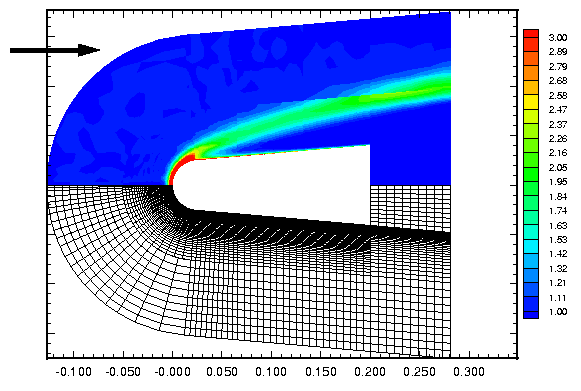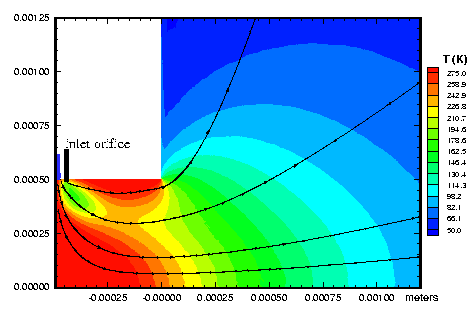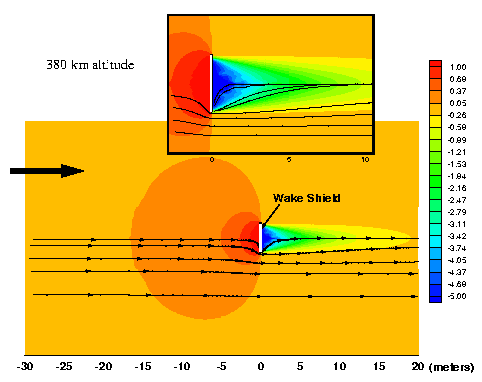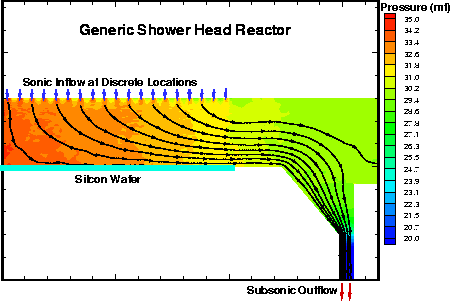
Note: The text below describes an older 2d DSMC code called ICARUS we developed at Sandia in the 1990s. A newer 3d code called SPARTA, has its own webpage. Links to SPARTA papers are also listed here:
Molecular-Level Simulations of Turbulence and Its Decay, M. A. Gallis, N. P. Bitter, T. P. Koehler, J. R. Torczynski, S. J. Plimpton, G. Papadakis, Phys Rev Letters, 118, 064501 (2017). (abstract)
Direct simulation Monte Carlo investigation of the Rayleigh-Taylor instability, M. A. Gallis, T. P. Koehler, J. R. Torczynski, and S. J. Plimpton, Phys Rev Fluids, 1, 043403 (2016). (abstract)
Direct simulation Monte Carlo investigation of the Richtmyer-Meshkov instability, M. A. Gallis, T. P. Koehler, J. R. Torczynski, and S. J. Plimpton, Physics of Fluids, 27, 084105 (2015). (abstract)
Direct Simulation Monte Carlo: The Quest for Speed, M. A. Gallis, J. R. Torczynski, S. J. Plimpton, D. J. Rader, T. Koehler, 29th Intl Symposium on Rarefied Gas Dynamics in Xi'an, China, AIP Conf Proc, 1628, 27 (2014). (abstract)
Direct Simulation Monte Carlo (DSMC) is a particle-based technique for simulating low-density fluid flows -- those with a ratio of mean-free path to geometry scale (the Knudsen number) of order 0.1 or greater. The basic idea is simple. Particles of various chemical species stream through a simulation domain bounded by inflow, outflow, or body surfaces. In a single timestep, each particle moves independently (without inter-particle collisions) to a new position. The move may include boundary interactions such as bouncing off a surface. At the end of the timestep an artificial grid is superposed on the simulation domain and used to locate particles that are near each other. Particles within a grid cell collide with each other and perform chemistry reactions via Monte Carlo (random) rules. Similarly, particles in grid cells that border a boundary surface can undergo surface chemistry interactions during the particle move. Statistics are gathered and a new timestep begins. Over the course of a many-timestep simulation, statistics accumulated within cells and at surfaces are used to compute various thermodynamic quantities of interest for all chemical species, such as flow temperature, density, and velocity.
A Sandia DSMC code, called ICARUS, grids a 2-d domain with a collection of adjoining body-fitted grids (see the 1st figure below). Axi-symmetric problems can be simulated in 3-d by rotating the grid around an axis of symmetry and applying 3-d boundary conditions. ICARUS also allows for particle and cell weighting factors which enable trace species to be accurately tracked with minimal computational effort.
ICARUS is parallelized by assigning a subset of grid cells and the particles in those cells to each processor. This can raise load-balancing issues as particle densities vary in space and time. Our strategies for achieving reasonable load- balance and good parallel performance are detailed in the papers below. On big problems (tens of thousands of grid cells, millions of particles) ICARUS typically runs efficiently on hundreds to thousands of processors. It has been a workhorse code at Sandia on a series of parallel machines, from the nCUBE 2 to the Intel Paragon to the Intel Tflops.
Here is a snapshot of particle density (on a log scale) around a nose cone as it re-enters the earth's atmosphere. The particle-tracking grid is shown in the lower half.

This is the temperature profile of a gas escaping from an orifice nozzle into vacuum with stream lines in black. The white region at the upper left of the figure is the nozzle; the inlet orifice is at the far left; the y-axis is a line of axi-symmetry.

This is a calculation of flow around a wake shield that was deployed on the space shuttle. The idea was to see if very low densities could be achieved in the wake of the shield as it swept through the upper atmosphere. These calculations of particle density showed a 6 order-of-magnitude reduction in density behind the shield, from the reference ambient density.

A more down-to-earth setting where low-density flows are important is in chemical vapor deposition (CVD) reactors for semiconductor processing. This is the pressure profile from a simulation of flow across a silicon wafer. Gas is injected at the top of the figure thru small orifices, flows across the surface of the wafer, and is pumped out at the lower right. Again, the left vertical axis is a line of axi-symmetry.

Collaborator on this project:
These papers provide some details of our parallelization technique and illustrate the application of DSMC to a few problems of interest to Sandia.
Parallel Particle Simulations of Low-Density Fluid Flows, S. J. Plimpton and T. J. Bartel, in Proc of High Performance Computing 1994, San Diego, CA, April 1994, p 31. (abstract)
Direct Monte Carlo Simulation of Ionized Rarefied Flows on Large MIMD Parallel Supercomputers, T. J. Bartel, S. J. Plimpton, C. R. Justiz, in Proc of 18th International Symposium on Rarefied Gas Dynamics, Vancouver, Canada, July 1992, published by AIAA, A94-30156, p 155-165. (abstract)
Monte Carlo Particle Simulation of Low-Density Fluid Flow on MIMD Supercomputers, S. J. Plimpton and T. J. Bartel, in Proc of Scalable High Performance Computing Conference, Williamsburg, VA, April 1992, p 212, and in Computing Systems in Engineering, 3, 333-336 (1992). (abstract)